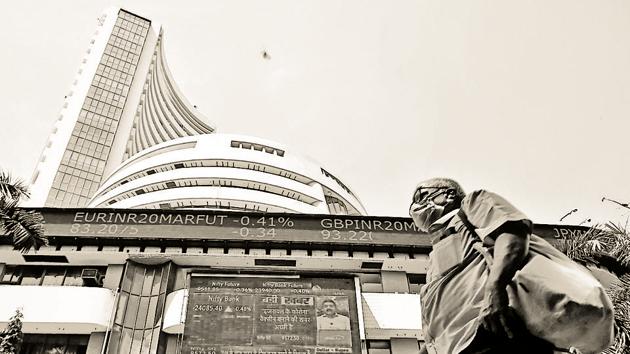What the Indian markets don’t tell you | Analysis
In contrast to the fate of millions of poor people, stock markets have boomed with little tangible benefit
India is in an economic recession for the first time in its independent history. Since April, large swathes of the nation were completely shut for three months and only partially open there after. A recession and a pall of gloom over the economy were inevitable. The only surprise would have been if India’s economy had not suffered a deleterious impact. But, for a tiny sliver of India’s elite, it is not gloom but boom times.

In the seven-month period between April and October, when businesses were shut and jobs were lost, 274 million rural Indians earned their livelihoods primarily by labouring an entire day to earn a paltry ₹200 under the Mahatma Gandhi National Rural Employment Guarantee Scheme (MGNREGS). Hundred million more people asked for work under MGNREGS this year vis-à-vis last year, reflecting the economic impact of the lockdown.
In exactly this sombre period, the top 50 companies in India’s stock market increased their value by $200 billion combined. This is seven times more than the increase in the value of these same 50 companies in the same period last year, when the economy was functioning normally. It defies conventional wisdom that when businesses are shut, and sales are faltering, that the market value of companies should increase so sharply.
The market value of most of these companies has risen irrationally because of exuberant stock market activity with utter disregard to the state of the underlying economy or the performance of the companies. Foreign investors flush with money from central banks in their home countries have poured their excess cash into India’s stock markets. A few thousand investors gamble in the stock markets on a daily basis which pushes up the value of companies.
Just when millions of rural Indians were toiling in the sun for ₹200 rupees, these investors spent $250bn every day to speculate on the prices of shares, currency, derivatives and other exotic financial instruments in India’s stock markets. Levels of speculative trading (measured as delivery percentage) in the stock markets reached an all-time high, with 50% more buying and selling this year compared to the same period last year when there was no economic shutdown.
These 50 companies employ nearly two million workers. A vast majority of these workers did not gain a single rupee from the new wealth added to their companies. Nearly all the gains accrued only to the owners of these companies, their shareholders and people employed in the financial markets sector. Worse, such increase in market wealth did not help to create new jobs in these companies. Instead, some reduced their workforce while many reduced the wages of their employees. There was no tangible benefit to the economy or society from this excessive speculative stock market activity except enriching a select few and widening the economic and social inequality.
Excesses of financialisation and financial markets are a real threat to social stability and harmony, not just in India but in many other countries such as the United States and United Kingdom. In the garb of market efficiency and price discovery, financial markets have turned into a den for gambling and a channel for easy wealth for a select few. But their risks are borne by all and protected by governments using taxes and savings of ordinary citizens. The social costs of excessive financialisation of economies now far exceed their perceived trickle down economic benefits.
In his recent memoirs, former US President Barack Obama describes his experiences in dealing with the extravagances of the financial sector during the 2008 global financial crisis. He famously shamed the financial sector professionals by calling them “fat cat bankers” and attempted to impose a 90% tax on their financial income above a certain high threshold. None of these measures worked and in the decade since the crisis, the financial sector has only turned even more reckless and shallow. Obama is candidly remorseful that he was unable to tame the beast of financialisation. It may not be an exaggeration to impute that such extreme financialisation of the economy disrupted the social order and fostered the subsequent extreme Left and extreme Right political movements championed by Bernie Sanders and Donald Trump respectively.
India’s post Covid-19 economy is like the fire god Agni — two faced with one beneficent and the other malignant. Malignant for a vast majority of Indian families that is experiencing job losses and declining incomes. Beneficent for a minuscule few that have seen their wealth soar, driven by irrational financial markets.
The government’s economic response to the Covid-19 crisis has only further aggravated this social disparity through a bountiful monetary stimulus for the financial sector and negligible fiscal aid for ordinary people.
It is time to acknowledge that India’s stock markets have no meaning for the larger economy. Gloating over stock market ebullience as an indicator of economic performance is like treating ticket sales of the Indian Derby as an indicator of the larger economy.
Covid-19, apart from damaging the health of millions of Indians, may also further rupture India’s economic and social equity.






